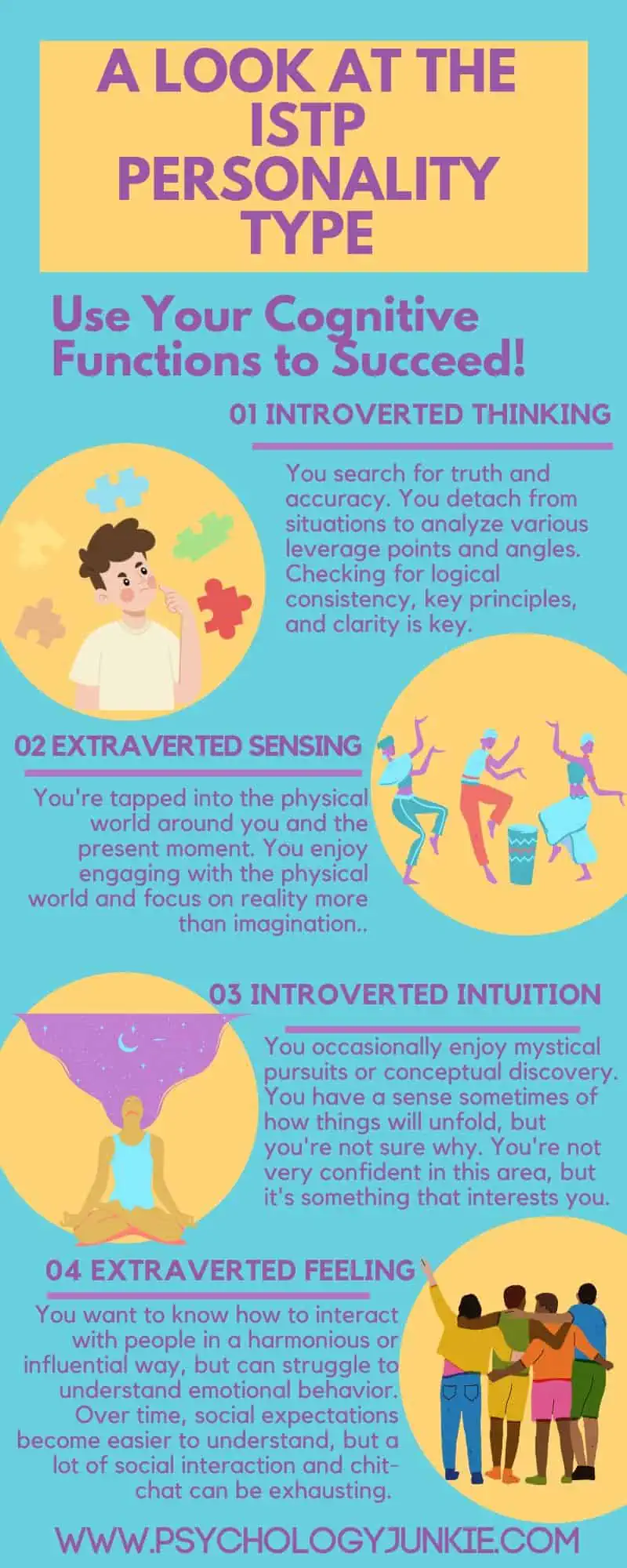Are ISTP Personalities Rare? A Look at the Facts
Have you ever wondered how rare the ISTP personality type is? The idea of belonging to a rare group can be both exciting and intimidating. Many ISTPs feel that they are a little different from the crowd. But is it really true? In this article, we’ll be exploring the level of rarity of the ISTP personality type, as well as why they often feel rare.
Not sure what your personality type is? Take our in-depth personality questionnaire here. Or you can take the official MBTI® here.

Table of contents
Estimated reading time: 5 minutes
Are ISTPs Rare?
According to the latest MBTI® Manual, ISTPs make up 9.8% of the national sample, making them the second most common personality type. However, Myersbriggs.org published a sample in 2001 that showed ISTPs make up only 5.4% of the national sample, making them the 8th rarest personality type.
So, which one is it? Are ISTPs fairly common or somewhere in between common and rare?
Whatever the case may be currently, ISTPs statistically show up as having a fairly average to common level of rarity. But even if ISTPs make up 9.8% of the national population, that still means the type will only show up about 1 in 10 people. And aside from personality type, they may have still further nuances that make them unique and one-of-a-kind.
Despite the statistical prevalence of their type, ISTPs often feel rare. Analytical, reserved, and skeptical of societal norms, ISTPs tend to march to the beat of their own drum. They care less about fitting in with the crowd and more about understanding how things work and seeking after truth. This can often lead to them questioning norms that others take for granted, poking holes in beliefs that many accept without thought, or challenging the status quo. Many ISTPs believe that the rest of society is operating under illogical directions due to societal constructs, emotions, or groupthink. As a result, they tend to feel a little separate from the mainstream types.

Why ISTPs Often Feel Misunderstood
The ISTPs “hero” function is called Introverted Thinking, or “Ti” for short. This function focuses on analyzing, understanding, and organizing information. It prefers to base all decisions on facts and logic rather than emotion. They enjoy categorizing data and deciphering the underlying principles of how things work together. Whether they’re taking a part a car engine or mixing paint colors, the search for understanding guides them to many different creative or technical endeavors.
This focus on logic and facts can be misunderstood by other types who are more concerned with emotions and feelings. Because ISTPs naturally spot logical fallacies and inconsistencies, they may debate in hopes of finding the truth. This can be seen as being mean-spirited or bad-tempered to certain other types (particularly feeling types), even if the ISTP isn’t aiming to hurt anyone’s feelings.
To the ISTP, truth and accuracy are driving forces that inspire them. It’s difficult for them to understand why so many people would feel offended by the need for truth. Thus, particularly in childhood, many ISTPs are told to “tone it down” and to “keep it to themselves.” Although they may understand the need for social etiquette, they don’t necessarily agree with it. This can lead them to feel like no one quite understands their unique perspective on things, adding to a sense of being rare or unlike others.
Famous ISTPs in History:
There are many famous ISTPs that showcase how this personality type can use their talents to stand out and make a difference. Just because people frequently criticize ISTPs as being pedantic or argumentative does not mean that their gifts of truth-seeking and practicality are not useful in the world.
Jack Dorsey, the co-founder of Twitter and Square, is one such example. Known for his analytical mind and strategic thinking, Dorsey has been influential in shaping new ways of social and economic connectivity.
Another example is Miyamoto Musashi, the legendary Japanese swordsman, painter, and author who was known for his unorthodox approach to combat and impeccable timing. Musashi was also known for his self-reliance and ability to think outside the box.
Magnus Carlsen, the chess prodigy, and World Chess Champion is yet another example of a famous ISTP. He once said, “The most helpful thing I learnt from chess is to make good decisions on incomplete data in a limited amount of time.” ISTPs at their best embody this same quality.
Clint Eastwood, the actor, director, and producer, is known for his quiet, thoughtful, and unassuming style that is characteristic of an ISTP. While he might look gruff and unapproachable on the outside, Eastwood is a creative genius who can blend his instincts and technical know-how to create award-winning films.
Conclusion:
Are ISTPs rare? The answer is both yes and no. In terms of prevalence, ISTPs are a fairly common personality type; however, their tendency to challenge norms and be skeptical of the crowd can make them feel alienated at times. ISTPs rarely blend in with the rest but have a common sense and ingenuity that make them stand out. Luckily, ISTPs are in the company of many greats who have harnessed these unique qualities to go on and achieve great things.
Find out more about ISTPs:
24 Signs That You’re an ISTP, the Vigilante Personality Type
What ISTPs Do When They’re Really Stressed Out
References:
MBTI® Manual for the Global Step 1™ and Step II™ Assessments by Isabel Briggs Myers, Naomi Quenk, Mary H. McCaulley, Allen L. Hammer – 4th edition (The Myers-Briggs Company, 2018)







